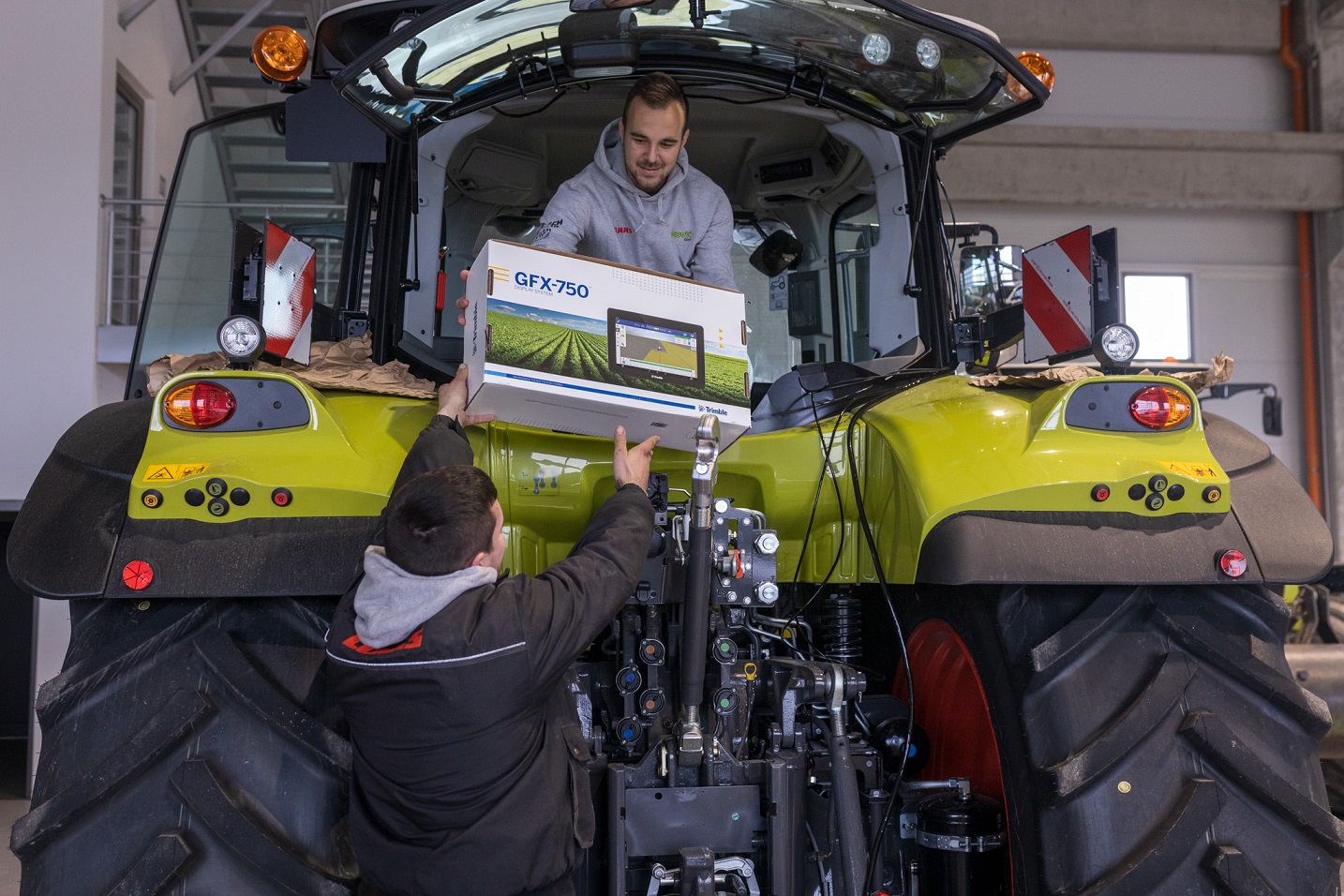
A Landscape of Croatian Agriculture Stock Photo Image of
This Note identifies the following suggestions to contribute to Croatian agriculture's transformation: • "Sustainably 'Made in Croatia'" would represent an approach in which government support is directed to measures that promote an image of Croatia that includes commitment to both environmentally responsible methods and high-quality agricultur.

Autocamp Biokovo, Zagvozd (Croatia) Organic Farming, Campsite, Croatia
by croatiaweek. June 29, 2022. in Business. Precision agriculture modernising Croatian farming (Photo: Gordan Trtanj) Precision agriculture is a relatively new branch of agriculture that serves as.

Farming in Dalmatia, Croatia, at the Adriatic Coast Stock Photo Image
140,000 litres of milk per day. Today, Osatina is the largest producer of raw milk in the Republic of Croatia and potentially in the entire European Union. Mr Ervacic said: "Our average yield per cow is 9,000 litres at 3.9% butterfat and 3.45% protein. We produce around 140,000 litres of milk daily making us the largest dairy farm in Croatia.

A Landscape of Croatian Agriculture Stock Photo Image of
1. DID YOU KNOW? Croatian agriculture is characterised by small family agricultural holdings, often located in mountain or karst (limestone) areas and areas facing natural or other specific constraints for farming. Forests cover 37% of the total area of Croatia.

Farming with Tractor and Plow in Field with Mountain Papuk in Th Stock
Agricultural land plots for sale in Croatia 74 properties found Sort by Brac (31) Vis (18) Hvar (11) Sibenik (5) Trogir/Ciovo (3) Kastela (2) Murter (1) Korcula (1) Omis (1) Zadar (1) #4633 Sibenik, Croatia, agricultural land for sale 125.000 € 16.000 m² 5 km

Precision agriculture modernising Croatian farming Croatia Week
THE 10 BEST Croatia Farms Farms in Croatia Enter dates Attractions Filters • 2 Sort All things to do Category types Attractions Tours Day Trips Outdoor Activities Concerts & Shows Food & Drink Events Classes & Workshops Shopping Transportation Traveler Resources Types of Attractions Sights & Landmarks Nightlife Nature & Parks Sights & Landmarks

Fish farming, Croatia Stock Photo Alamy
In 2018, the Croatian Ministry of Agriculture (MoA) requested World Bank support to strengthen existing national capacity in evidence-based strategic planning in agriculture and rural development, fisheries and aquaculture, with the objective to accelerate the transformation of Croatia's agri-food system.

Farming vineyards Croatia stock photo. Image of engine 111159504
Farming in Croatia is very much a family affair; on average 90.7 % of the labour input for agriculture (measured in annual work units) was carried out by the farmer and/or a member of his/her family in 2010. This was a much higher proportion than the average for the EU-27 (76.4 %). Two in every five (40.2 %) regular agricultural workers in.

Precision agriculture modernising Croatian farming Croatia Week
Large cages at a tuna farm in the Adriatic Sea off the coast of Croatia Tuna ranching and farming in Croatia generates an annual export value of between $70 and $80 million and creates valuable job opportunities for the country's coastal communities © Shutterstock

Agriculture in Croatiadelicious FoodLandwirschaft in Kroatien
There are currently 15 fish-processing factories in Croatia, which produce 15,000 tonnes of various fish products per year. The 2000 output of fresh-water fish amounted to about 4,800 tonnes, and salt-water fish and other sea food to about 24,000 tonnes. A new production line, tuna breeding for the Japanese market, was launched in 1997.

Mussels farming, Croatia stock photo. Image of blue, touristic 15011114
Croatia - Agricultural SectorCroatia - Agricultural Sector This is a best prospect industry sector for this country. Includes a market overview and trade data.. In 2018, Croatia imported $3.9 billion in agriculture and related products. Imports of agricultural products from the United States were valued just over $22 million in 2018. However.

Fish Farming Near The Croatia Bosnia Border HighRes Stock Photo
Croatian culture of gardening - the most common vegetables, herbs, and flowers. Croatian land is very fertile, and gardening is a big part of the culture. Most people living in rural areas have their own gardens but so do Croats in urban areas, even if all they have is a small piece of earth outside their apartment or a sunny balcony.

Aerial view of fish farming in Dugi Otok in Croatia stock photo OFFSET
Official records say that over 50 per cent of all agricultural land in Croatia is owned by elderly family members (over 60 years old). This is a limiting factor to the faster growth of agriculture.

Driving the Scenic Dalmatian Coast of Croatia TWO UP RIDERS
Farming there is characterized by capital-intensive, market-oriented production and larger landholdings. Most of the land previously under social ownership has been nationalized by the Croatian government and is leased to farmers. Major crops of the region are sugar beets, corn (maize), wheat, potatoes, barley, soybeans, sunflowers, and tobacco.

"small crop farming, Croatia" by Margaret Hyde Redbubble
What Is Agritourism? Agrotourism is quite developed in Croatia, particularly in the Dalmatian hinterlands and inner regions, away from the sea and developed coasts. Here, many Croatian families that live in rural areas run touristic attractions on their farms and agricultural lands to show visiting tourists the other charms Croatia has to offer.

Can a Wild Daisy Rejuvenate Croatia’s Farming Economy? The New York Times
Agricultural Sector Last published date: 2023-12-04 Croatia has approximately 1.5 million hectares (ha) of used agricultural land and 2.8 million ha of forests. Croatia has favorable conditions for diverse farming, but is self-sufficient only in the production of wheat, corn, oats, barley, major oil seeds, mandarins, cherries, and sour cherries.